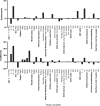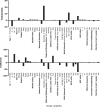Understanding factors associated with rural-urban disparities of stunting among under-five children in Rwanda: A decomposition analysis approach
- PMID: 36994914
- PMCID: PMC10262907
- DOI: 10.1111/mcn.13511
Understanding factors associated with rural-urban disparities of stunting among under-five children in Rwanda: A decomposition analysis approach
Abstract
Childhood stunting in its moderate and severe forms is a major global problem and an important indicator of child health. Rwanda has made progress in reducing the prevalence of stunting. However, the burden of stunting and its geographical disparities have precipitated the need to investigate its spatial clusters and attributable factors. Here, we assessed the determinants of under-5 stunting and mapped its prevalence to identify areas where interventions can be directed. Using three combined rounds of the nationally representative Rwanda Demographic and Health Surveys of 2010, 2015 and 2020, we employed the Blinder-Oaxaca decomposition analysis and the hotspot and cluster analyses to quantify the contributions of key determinants of stunting. Overall, there was a 7.9% and 10.3% points reduction in moderate stunting among urban and rural areas, respectively, and a 2.8% and 8.3% points reduction in severe stunting in urban and rural areas, respectively. Child age, wealth index, maternal education and the number of antenatal care visits were key determinants for the reduction of moderate and severe stunting. Over time, persistent statistically significant hotspots for moderate and severe stunting were observed in Northern and Western parts of the country. There is a need for an adaptive scaling approach when implementing national nutritional interventions by targeting high-burden regions. Stunting hotspots in Western and Northern provinces underscore the need for coordinated subnational initiatives and strategies such as empowering the rural poor, enhancing antenatal health care, and improving maternal health and education levels to sustain the gains made in reducing childhood stunting.
Keywords: DHS; Oaxaca-Blinder; Rwanda; moderate and severe stunting.
© 2023 The Authors. Maternal & Child Nutrition published by John Wiley & Sons Ltd.
Conflict of interest statement
The authors declare no conflict of interest.
Figures




References
-
- Binagwaho, A. , Rukundo, A. , Powers, S. , Donahoe, K. B. , Agbonyitor, M. , Ngabo, F. , Karema, C. , Scott, K. W. , & Smith Fawzi, M. C. (2020). Trends in burden and risk factors associated with childhood stunting in Rwanda from 2000 to 2015: Policy and program implications. BMC Public Health, 20(1), 83. 10.1186/s12889-020-8164-4 - DOI - PMC - PubMed
-
- Blinder, A. S. (1973). Wage discrimination: Reduced form and structural estimates. The Journal of Human Resources, 8, 436–455.
-
- Cardenas, E. , Osorio, A. M. , Barandica, O. J. , & Pico Fonseca, S. M. (2022). Mind the gap! socioeconomic determinants of the stunting urban‐rural gap for children in Colombia. Child Indicators Research, 15(2), 415–432.
-
- Chakravarty, N. , Tatwadi, K. , & Ravi, K. (2019). Intergenerational effects of stunting on human capital: Where does the compass point? International Journal of Medicine and Public Health, 9(4), 105–111.

